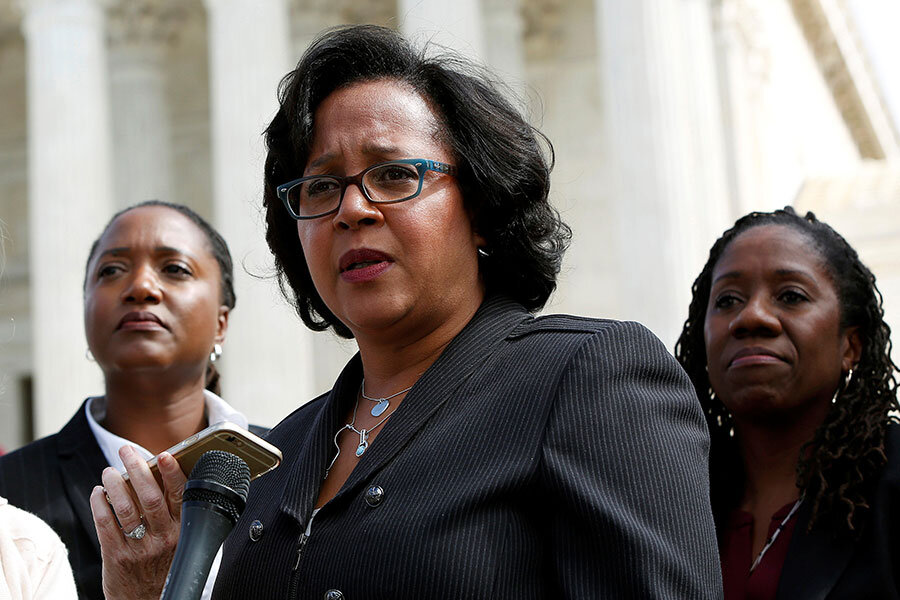Supreme Court hears 'indefensible' death penalty case
Loading...
| Washington
The United States Supreme Court on Wednesday confronted a death penalty case that some experts say is the most dramatic example in decades of the kind of racial bias that has beset the criminal justice system and its capital punishment process.
But while the details are sensational and the justices appeared sympathetic toward the defendant, what stood out about the case Wednesday was its uniqueness.
It is not on track to substantially shift how the justices view capital punishment, or how it is administered around the country. Instead, the case seems set to become another example of the court chipping away at the death penalty by overturning extreme practices around the edges.
The case concerns Duane Buck, an African-American man sentenced to death by a Texas jury in 1997. Mr. Buck’s lawyer called an expert witness who testified that Buck would be more likely to commit a violent crime in the future because he is black.
That, in itself, makes the case “extraordinary,” to quote Buck’s petition. But the way in which the case arrived at the Supreme Court was also particularly complicated and a source of concern for the justices.
Those facts mean the case isn’t likely to result in a broad decision.
“It’s a unique case, so this would be an odd platform to issue general rules,” said Chief Justice John Roberts.
But there appeared to be broad agreement that Buck’s case was poorly handled. Conservative Justice Samuel Alito went so far as to say that the actions during the original sentencing were “indefensible.” Liberal Justice Ruth Bader Ginsburg added: “What competent counsel would put that evidence before a jury?”
That meant part of the hearing pivoted on the justices trying to feel out each other’s positions on the death penalty – an evolving area of law. Supreme Court justices don’t meet ahead of arguments to discuss a case, so the hour of questioning is usually their first opportunity to get a sense of where colleagues stand.
Left-leaning Justice Stephen Breyer reiterated his well-known views on the death penalty, saying the case “proves the arbitrariness of what’s going on.”
Arbitrariness was a key point in Justice Breyer’s 40-page dissent last term to a decision allowing Alabama to continue using a controversial lethal injection drug. Justice Ginsburg joined his dissent.
“It [is] increasingly clear that the death penalty is imposed arbitrarily, i.e., without the ‘reasonable consistency’ legally necessary to reconcile its use with the Constitution’s commands,” he wrote.
That dissent also argued that the death penalty is unconstitutionally cruel because of the long delays. The average time spent on death row has more than doubled from six years and two months in 1984 to 15 years and five months in 2013.
Court watchers interpreted this as a nod to Justice Anthony Kennedy, the court’s swing vote, who had condemned long-term solitary confinement in a case weeks earlier.
Breyer’s dissent “seems all but written to appeal to Kennedy,” Slate’s Dahlia Lithwick wrote last July.
On Wednesday, Justice Kennedy was the second-quietest justice behind the perpetually silent Clarence Thomas, asking just two questions.








